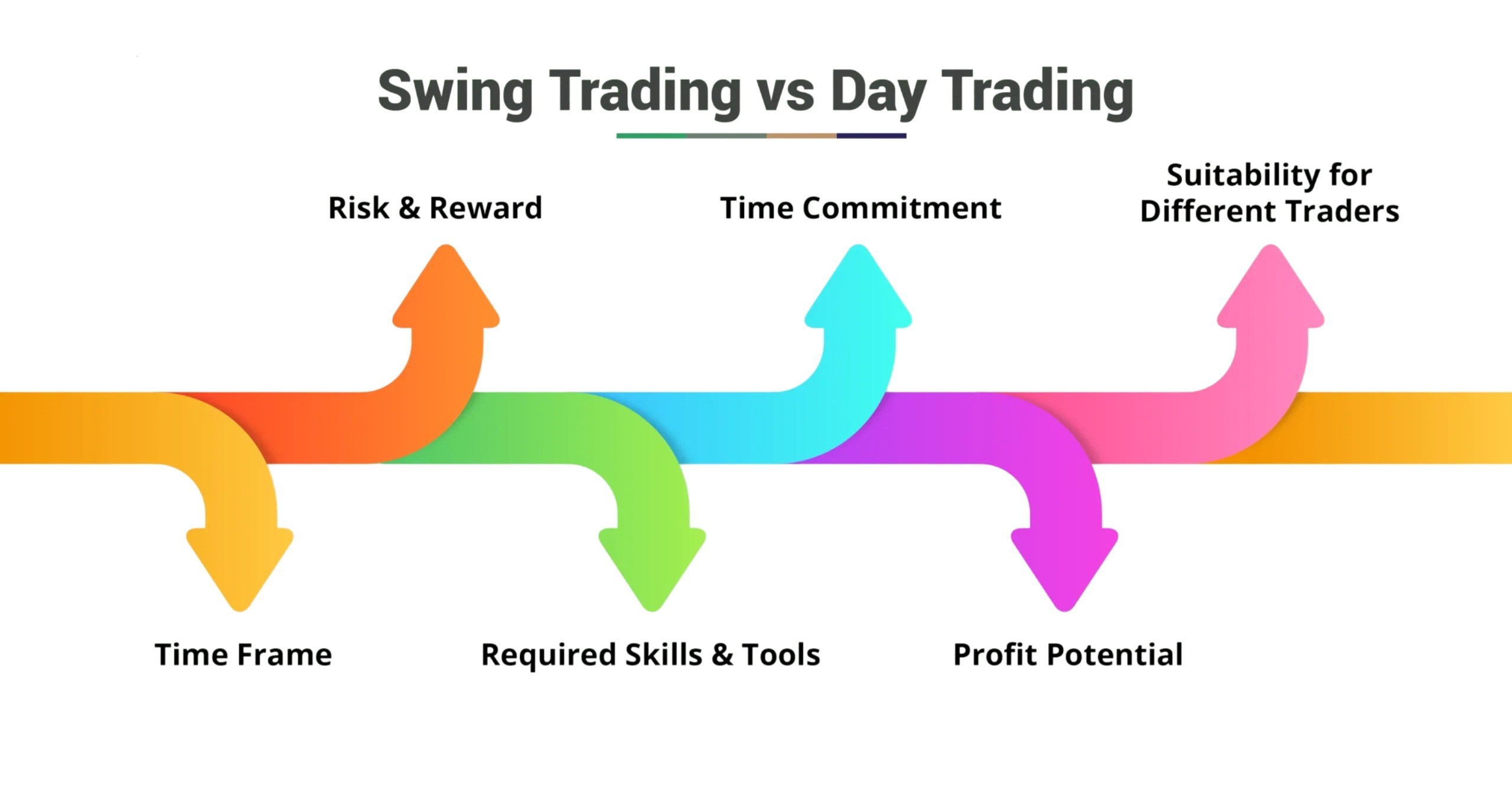Swing Trading vs. Day Trading: Which One Is Right for You?
The stock market offers a variety of ways to profit, and two of the most popular trading strategies are swing trading and day trading. Both aim to take advantage of market fluctuations, but they differ significantly in approach, time commitment, and risk tolerance.
Whether you’re a beginner exploring trading options or a seasoned investor looking to refine your strategy, understanding the differences between swing and day trading can help you make an informed decision.
⚡ What Is Day Trading?
Day trading involves buying and selling stocks (or other assets) within the same trading day. Traders typically close all positions before the market closes to avoid overnight risk.
Key Features:
- Time Commitment: Requires constant attention during market hours.
- Holding Period: Minutes to hours, but never overnight.
- Goal: Capitalize on small price movements with high frequency.
- Tools Needed: Advanced charting software, fast internet, direct access trading platforms.
✅ Pros:
- No overnight risk.
- Potential for quick profits.
- More trading opportunities per day.
❌ Cons:
- High stress and emotional intensity.
- Requires significant time and focus.
- Higher transaction costs due to frequent trades.
📊 What Is Swing Trading?
Swing trading involves holding a position for several days or even weeks to benefit from "swings" in price momentum.
Key Features:
- Time
Commitment: Less intensive; you
can monitor trades daily or a few times a week.
- Holding
Period: Days to weeks.
- Goal: Capture
medium-term market
movements.
- Tools Needed:
Technical analysis, basic
fundamental knowledge, trading platform with alert
tools.
✅ Pros:
- Less time-intensive.
- Can be done part-time.
- More room for planning and analysis.
❌ Cons:
- Exposure to overnight and weekend market risks.
- Fewer trading opportunities compared to day trading.
- Requires patience and discipline.
⚖️ Day Trading vs. Swing Trading: Head-to-Head Comparison
| Feature | Day Trading | Swing Trading |
|---|---|---|
| Time Commitment | Full-time (active hours) | Part-time (flexible) |
| Holding Period | Intraday (minutes–hours) | Days to weeks |
| Risk Exposure | Lower overnight risk | Higher overnight risk |
| Stress Level | High | Moderate |
| Skill Level | Advanced | Beginner to intermediate |
🧠 Which One Is Right for You?
Choose Day Trading if:
- You thrive in fast-paced environments.
- You have the time to monitor markets throughout the day.
- You can handle high stress and make quick decisions.
- You have sufficient capital and access to trading tools.
Choose Swing Trading if:
- You have a full-time job or other commitments.
- You prefer a more relaxed trading style.
- You're new to trading and want to learn gradually.
- You can manage your trades a few times a week.
Final Thoughts
There is no one-size-fits-all answer when it comes to choosing between swing trading and day trading. Your choice should depend on your lifestyle, risk tolerance, experience level, and financial goals. Many successful traders start with swing trading and move into day trading as they gain confidence and skill. Whichever path you choose, education and discipline are key. Start small, practice consistently, and always manage your risks.
